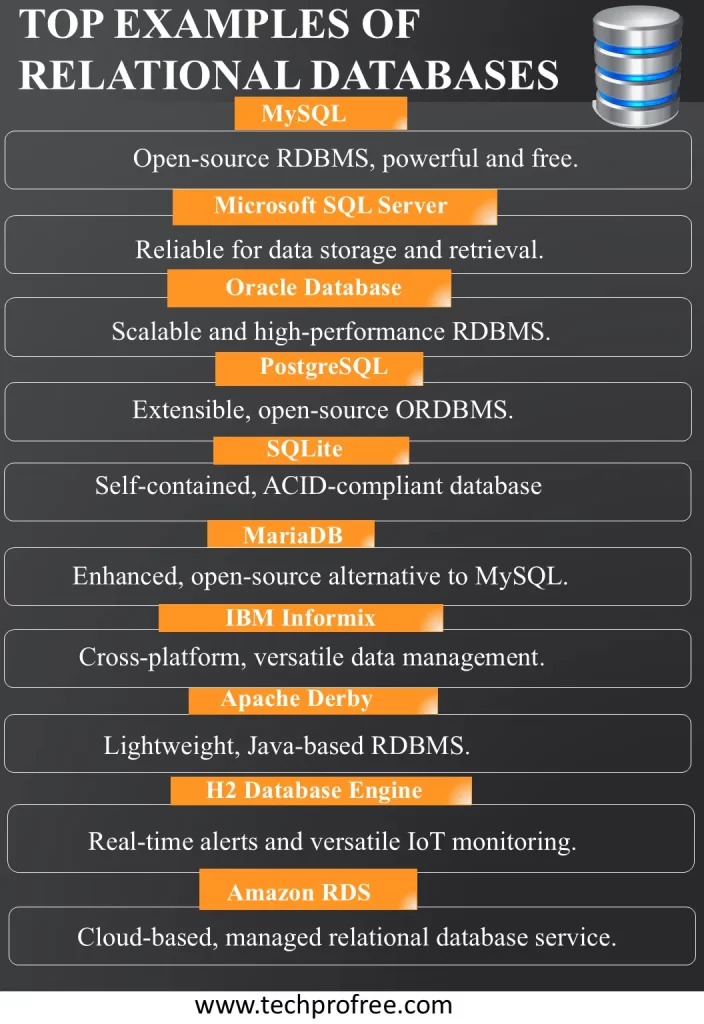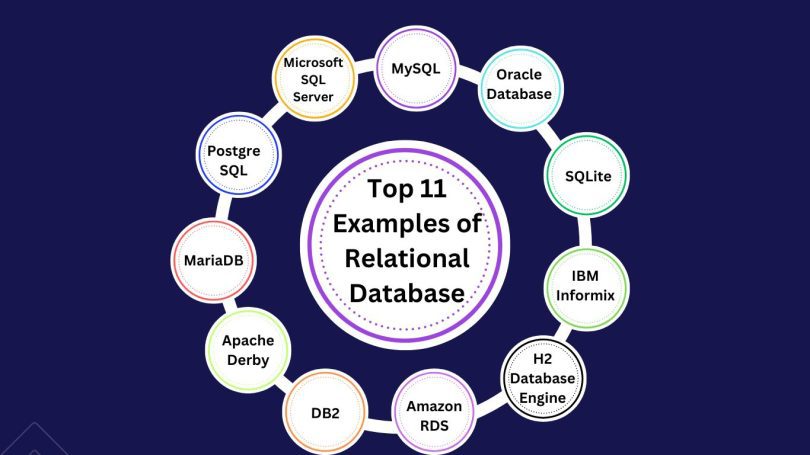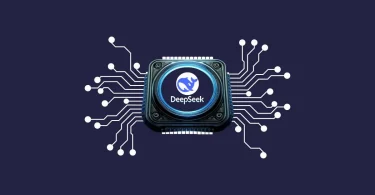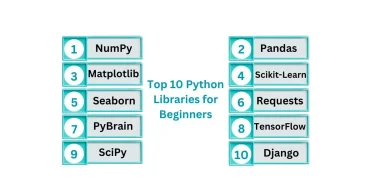The management of data and storage is very important in the modern/digital age/society for commercial firms and individuals.
Data is structured and accessed through an organizational model that deserves analysis. In this field, one of the most prevalent methods is based on relational databases that constitute a kind of foundation for data storage and organization, thereby providing support to many modern software applications. These databases provide a framework for data storage and retrieval that allows easy handling of huge datasets.
This discourse is meant to demonstrate what a relational database is and also present instances/examples of the relational database.
Relational Database Management System (RDBMS)
A relational database is a type of database designed to store and manage data systematically, eliminating the need for cumbersome search operations. Its architecture includes various tables, columns and rows connected through relational links enabling quick access to related information by identifying common attributes across the tables.
In comparison to other database models e.g., flat file databases, relational databases are characterized by their flexibility. Which enables rapid data manipulation operations such as addition or subtraction with minimal effort and time wastage in the process. As a result, they appear as an effective solution for large-scale projects and applications that perform continuous data updates and changes.
Examples of Relational Database
This section comprises a summary of some significant relational database management systems examples in the digital society.
-
MySQL
MySQL is an open-source RDBMS widely used; it runs under the General Public License (GNU) and several proprietary licenses. It provides strong data management functionalities. At the same time, it is available free of cost.
-
Microsoft SQL Server
Microsoft SQL Server is an RDBMS developed by the Microsoft organization and utilized for data storage and retrieval from software applications, whether local or distributed across networks.
-
Oracle Database
Oracle Database, created by the company named Oracle Corporation is a popular RDBMS due to its scalability, reliability and performance. It works in the major platforms of Linux, UNIX and Windows accommodating multiple organizational needs.
-
PostgreSQL
It is known as Postgres. It can be regarded as ORDBMS; this means that the main focus of such software is to provide extensibility along with conformity. Its open-source character under the PostgreSQL License highlights the accessibility and adaptability of this software.
-
SQLite
The C programming library also includes SQLite; a self-contained RDBMS, without the client-server architecture. It has a wide distribution over browsers, operating systems and embedded systems with ACID compliance along with rich SQL support.
-
MariaDB
MariaDB, an open-source relational database management system developed by MySQL originators is compatible with the latter while having additional functionalities. Its widespread adoption cuts across the different sizes of organizations due to its versatility and scalability.
-
IBM Informix
Informix, a product introduced in 1982 is one of the oldest commercial RDBMS products that have been acquired by IBM. Its ability to work in different platforms highlights its historical importance and continued relevancy.
-
Apache Derby
Apache Derby, created by the Apache Software Foundation, is a relational database management system (RDBMS) designed to be easily incorporated into Java-based applications to support online transaction processing. Java-based Apache Derby becomes a lightweight and flexible open-source RDBMS, designed for the development of small scale databases or prototypes due to its usability.
-
H2 Database Engine
H2 is an SQL database engine written in Java™ and provides the implementation of the JDBC API. It includes a browser-based console application for user convenience. Additionally, it’s noteworthy that the H2 database comes pre-installed with the Curam software suite. Another Java-oriented RDBMS, H2 Database Engine is simple and provides rich features for embedded or server deployment which makes it a good choice as a small application use like prototype.
-
DB2
IBM DB2 accommodates a range of the hybrid data management solutions that address different workloads from transactional processing to analytics. Its attributes focus on performance tuning and scalability in multiple data environments.
- Amazon Relational Database Service (Amazon RDS)
It is imperative to acknowledge that Amazon RDS constitutes a distributed relational database service offered by Amazon Web Services. Operating as a cloud web service, the main goal is to facilitate the configuration, management and scalability of relational databases used within applications.
One of the few notable managed relational database services that allow for deployment and scaling of popular RDBMSs like MySQL, Postgre SQL Maria DB, Oracle or MSSQL in cloud infrastructure is Amazon Relational Database Service (Amazon RDS).
Conclusion
The digital age demands robust data management solutions, and relational databases have emerged as a powerful foundation for storing and organizing information. This article explored 11 prominent examples of relational database management systems (RDBMS), showcasing their diverse functionalities and highlighting their significance across various industries. RDBMS offers diverse features and capabilities tailored to specific needs, underlining their versatility in various contexts. As digital landscapes evolve, relational databases remain essential for effective data management and analysis, empowering organizations to maximize their data assets.
The management of data and storage is very important in the modern/digital age/society for commercial firms and individuals.
Data is structured and accessed through an organizational model that deserves analysis. In this field, one of the most prevalent methods is based on relational databases that constitute a kind of foundation for data storage and organization, thereby providing support to many modern software applications. These databases provide a framework for data storage and retrieval that allows easy handling of huge datasets.
This discourse is meant to demonstrate what a relational database is and also present instances/examples of the relational database.
Relational Database Management System (RDBMS)
A relational database is a type of database designed to store and manage data systematically, eliminating the need for cumbersome search operations. Its architecture includes various tables, columns and rows connected through relational links enabling quick access to related information by identifying common attributes across the tables.
In comparison to other database models e.g., flat file databases, relational databases are characterized by their flexibility. Which enables rapid data manipulation operations such as addition or subtraction with minimal effort and time wastage in the process. As a result, they appear as an effective solution for large-scale projects and applications that perform continuous data updates and changes.
Examples of Relational Database
This section comprises a summary of some significant relational database management systems examples in the digital society.
-
MySQL
MySQL is an open-source RDBMS widely used; it runs under the General Public License (GNU) and several proprietary licenses. It provides strong data management functionalities. At the same time, it is available free of cost.
-
Microsoft SQL Server
Microsoft SQL Server is an RDBMS developed by the Microsoft organization and utilized for data storage and retrieval from software applications, whether local or distributed across networks.
-
Oracle Database
Oracle Database, created by the company named Oracle Corporation is a popular RDBMS due to its scalability, reliability and performance. It works in the major platforms of Linux, UNIX and Windows accommodating multiple organizational needs.
-
PostgreSQL
It is known as Postgres. It can be regarded as ORDBMS; this means that the main focus of such software is to provide extensibility along with conformity. Its open-source character under the PostgreSQL License highlights the accessibility and adaptability of this software.
-
SQLite
The C programming library also includes SQLite; a self-contained RDBMS, without the client-server architecture. It has a wide distribution over browsers, operating systems and embedded systems with ACID compliance along with rich SQL support.
-
MariaDB
MariaDB, an open-source relational database management system developed by MySQL originators is compatible with the latter while having additional functionalities. Its widespread adoption cuts across the different sizes of organizations due to its versatility and scalability.
-
IBM Informix
Informix, a product introduced in 1982 is one of the oldest commercial RDBMS products that have been acquired by IBM. Its ability to work in different platforms highlights its historical importance and continued relevancy.
-
Apache Derby
Apache Derby, created by the Apache Software Foundation, is a relational database management system (RDBMS) designed to be easily incorporated into Java-based applications to support online transaction processing. Java-based Apache Derby becomes a lightweight and flexible open-source RDBMS, designed for the development of small scale databases or prototypes due to its usability.
-
H2 Database Engine
H2 is an SQL database engine written in Java™ and provides the implementation of the JDBC API. It includes a browser-based console application for user convenience. Additionally, it’s noteworthy that the H2 database comes pre-installed with the Curam software suite. Another Java-oriented RDBMS, H2 Database Engine is simple and provides rich features for embedded or server deployment which makes it a good choice as a small application use like prototype.
Amazon Relational Database Service (Amazon RDS)
It is imperative to acknowledge that Amazon RDS constitutes a distributed relational database service offered by Amazon Web Services. Operating as a cloud web service, the main goal is to facilitate the configuration, management and scalability of relational databases used within applications.
One of the few notable managed relational database services that allow for deployment and scaling of popular RDBMSs like MySQL, Postgre SQL Maria DB, Oracle or MSSQL in cloud infrastructure is Amazon Relational Database Service (Amazon RDS).
-
DB2
IBM DB2 accommodates a range of the hybrid data management solutions that address different workloads from transactional processing to analytics. Its attributes focus on performance tuning and scalability in multiple data environments.

Open-Source vs Proprietary Relational Databases
Open-Source Databases
- MySQL
- PostgreSQL
- SQLite
- MariaDB
- Apache Derby
- H2 Database
- Amazon RDS (supports open-source databases)
Microsoft SQL Server
- Oracle Database
- DB2
- IBM Informix
Conclusion
The digital age demands robust data management solutions, and relational databases have emerged as a powerful foundation for storing and organizing information. This article explored 11 prominent examples of relational database management systems (RDBMS), showcasing their diverse functionalities and highlighting their significance across various industries. RDBMS offers diverse features and capabilities tailored to specific needs, underlining their versatility in various contexts. As digital landscapes evolve, relational databases remain essential for effective data management and analysis, empowering organizations to maximize their data assets.
Relational Database Comparison: Key Features and Use Cases
| Database | Unique Features | Use Cases |
| MySQL | Open-source, fast data input, ACID compliant, scalability | Web applications, data-driven projects |
| Microsoft SQL Server | Developed by Microsoft, integrates well with Windows environments, supports large-scale applications | Enterprise applications, data storage and retrieval |
| Oracle Database | Scalability, reliability, works on Linux, UNIX, and Windows platforms | Large enterprises, mission-critical data management |
| PostgreSQL | Object-relational database, high read/write speeds, free and open-source | Complex queries, data analysis, supports MVCC for concurrency control |
| SQLite | Lightweight, embedded database without client-server architecture | Mobile applications, browsers, embedded systems like IoT devices |
| MariaDB | Forked from MySQL, improved performance with more storage engines, better scalability | Versatile for businesses of all sizes, better performance than MySQL |
| IBM Informix | One of the oldest commercial RDBMS, cross-platform compatibility | Industries needing high transaction processing, historical importance |
| Apache Derby | Lightweight, Java-based, easy for developing small databases or prototypes | Java-based applications, small-scale databases |
| H2 Database Engine | Open-source, Java-based, good for embedded and server use, rich features | Small applications, prototyping |
| Amazon Relational Database Service (RDS) | Cloud-managed, supports scaling, high availability through Multi-AZ deployment | Cloud-based applications, businesses looking for automated database management |
| DB2 | IBM-developed, hybrid data management, supports transactional processing and data warehousing | Enterprise-level databases, large-scale analytics, business intelligence |




Leave a Comment